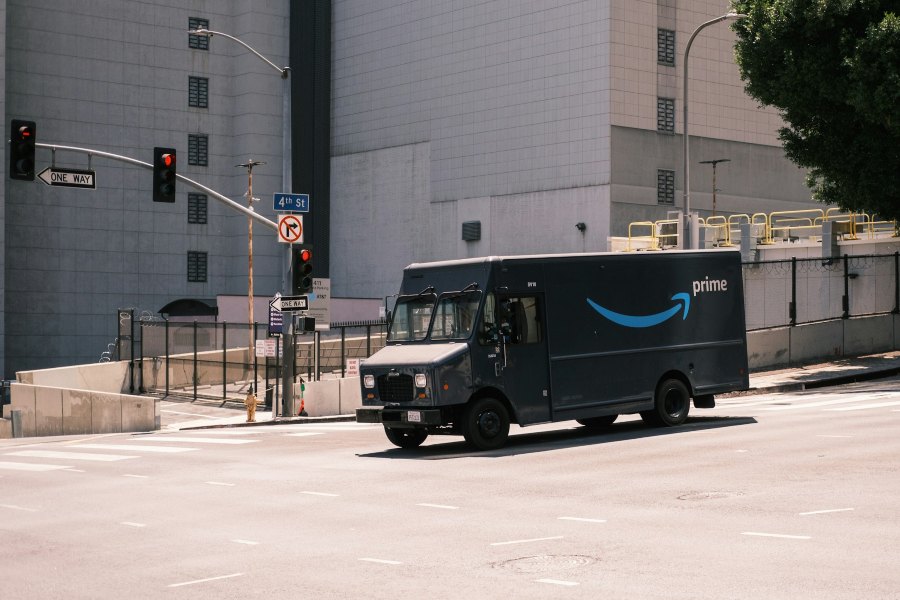Amazon is the hub of e-commerce, receiving millions of visitors every day. The number of visitors to your website is measured as traffic.
As you know, there are different types of website traffic; each type tells something about how your business performs.
Many people with Amazon accounts are more concerned with the high direct traffic on their websites. Should they be worried?
Well, we’ve answered that question here. We’ve also explained why Amazon has so much direct traffic, what it means, and how it differs from organic traffic.
What is Direct Traffic?
Direct traffic is visitors who come to your website by directly typing the URL in their browser, via a bookmark, or by clicking on an untracked link.
In Google Analytics, direct traffic is normally classified without source and referral information. When Google Analytics can’t identify where the traffic has been sourced, it attributes those sessions as direct traffic.
To most businesses, direct traffic is an important yardstick of customer loyalty and brand recognition.
What’s Better: Organic or Direct Traffic?
Organic traffic comes from search engines like Google, where visitors come to you through a non-paid search result.
On the other hand, direct traffic refers to the visitor accessing your website directly without using an intermediary source. Both types of traffic have their merits:
1. Organic Traffic
Organic visitors are usually new users who may or may not have heard about your brand but find you through search engines based on their needs or interests. This kind of traffic has great value for brand discovery and can increase the acquisition of new customers.
2. Direct Traffic
This typically includes returning customers, users familiar with your brand, or those who know your products. It is usually considered more valuable because it reflects strong brand loyalty.
While both types of traffic are necessary for any healthy website, the debate is mute. It all depends on what’s most important to your business goals.
If brand visibility is important, organic traffic is the way to go. For customer retention and repeat business, direct traffic is preferred.
Why Does Amazon Have So Much Direct Traffic?
If your Amazon traffic analysis indicates high direct traffic, the below could be the reason.
1. Frequent Users Bookmarking and Manual URL Entry
High direct traffic means recurring users bookmark the Amazon website or type the URL into their browser.
It’s indicative of brand loyalty, as users feel comfortable and know the site inside out. These kinds of habitual visitors are sure to be returning customers.
2. Bad Redirects
Bad or improper redirection practices contribute to a higher volume of direct traffic. For example, if a URL is redirected to another page without a clear tracking mechanism, the source of that traffic may be lost.
This can happen because of broken links, outdated links, or bad URL maintenance. If users reach the Amazon site through such redirects, they can be considered direct traffic, increasing that percentage in analytics.
3. Navigating from Secure to Non-Secure Links
Another contributing factor could be the impact of users toggling between secure HTTPS links and non-secure HTTP pages.
When the visitor is redirected to an insecure site from a secure link, the traffic source may not be able to be tracked. That can cause sessions to show up as direct traffic in analytics tools.
4. Dark Social Traffic
The term “dark social” describes shares that occur within private channels, such as email, instant messaging, or social platforms such as WhatsApp.
These types of sharing don’t offer clean referrer data, and analytics tools bucket this traffic as direct.
As users worldwide increasingly use these private means of sharing, a large percentage of Amazon’s traffic is bound to come from these channels.
5. Accessing the Website Via Non-Web Documents
Consumers may also use links from within non-web documents, such as Word documents, PowerPoint or other presentations, Excel spreadsheets, or PDFs, to access an Amazon website.
These links are orphaned, meaning they do not carry any referral data identifying their source. When these documents are sent to users via email or other means, clicking those links to Amazon will be registered as direct traffic.
6. Missing or Broken Google Analytics Tracking Codes
The other technical issues that can cause high direct traffic are missing or broken Google Analytics tracking codes.
Not every page on Amazon’s website is tracked correctly, so any traffic to those particular pages may not be attributed correctly to its source.
Consequently, such visits can be recorded as direct traffic. In this way, the traffic flow may be distorted, and it may be thought that many users are accessing a site directly and not through search engines or referrals.
How to Reduce High Amazon Direct Traffic?
Below are some of the ways you can use to reduce the volume of direct traffic on Amazon
1. Switching from HTTP to HTTPS
Migrating your website from HTTP to HTTPS is important for security and correct traffic tracking. When your site is over HTTPS, browsers are inclined to pass referral information correctly, helping you better understand where the traffic comes from.
2. Careful Management of Redirects
You must manage your redirects precisely enough to avoid having a lot of superfluous direct traffic. If you apply vanity URLs with UTM parameters to your pages, make sure they are correctly implemented.
Otherwise, tracking integrity will be lost once users are redistributed to another page. This attention to detail will allow you to see where your traffic is coming from and generally give better attribution of user behavior.
3. Effective Campaign Tagging
Avoid tracking internal links with tags that complicate your analysis; use clear, consistent UTM parameters on external campaigns.
This will keep the internal links clean so that they are not accidentally classified as direct traffic.
Proper tagging ensures you’ll be able to measure the performance of your marketing efforts, providing insights into how users will interact with your site.
4. Conducting the Analytics Audit
Proper auditing would involve reevaluating your traffic measurement plan and aggressive tests at both page and property levels.
This should help you find discrepancies and problems in collecting and reporting data.
The clearer insights you receive over traffic sources, the more informed decisions and strategic course changes you will have by ensuring your analytics setup is correct.
Conclusion
By now, you should be well versed in the reasons why you are seeing high direct traffic on Amazon.
While direct traffic can strongly indicate loyalty and trust, it may also point out possible issues you need to address. Luckily, we have listed all the possible causes of high direct traffic and what you can do to rectify the issue.
A proper mix of organic, referral, and direct traffic is important for brand awareness and loyalty.












































Leave a Reply